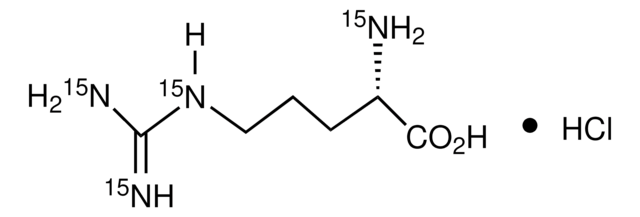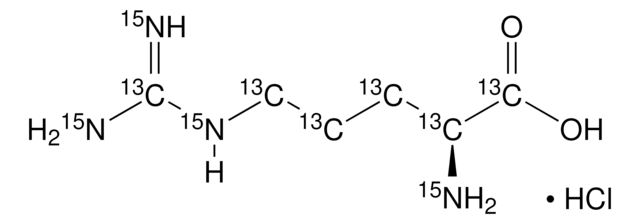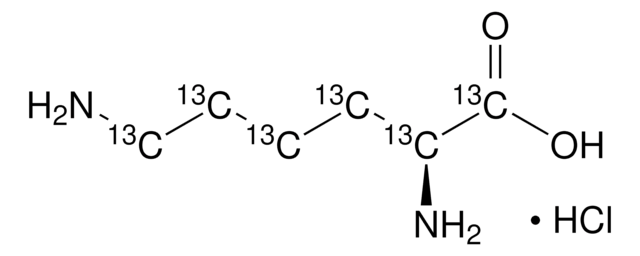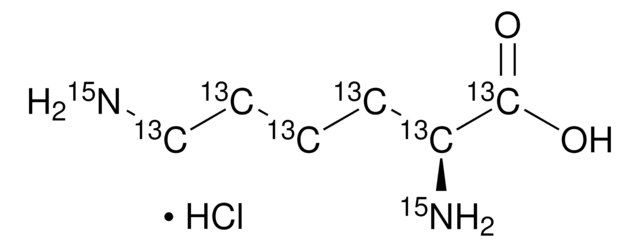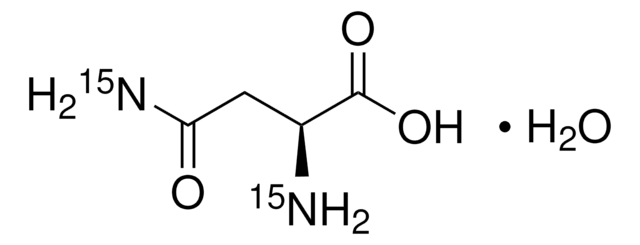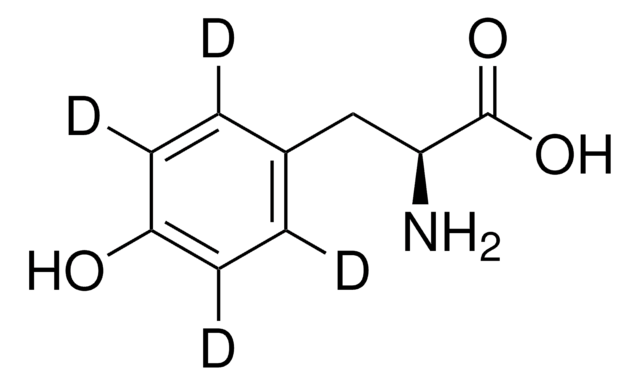643440
L-Arginine-13C6 hydrochloride
99 atom % 13C, 95% (CP)
Sinónimos:
SILAC Amino Acid, (S)-(+)-2-Amino-5-[(aminomethyl)amino]pentanoic acid-13C6 hydrochloride, 13C Labeled arginine, 13C Labeled arginine hydrochloride
About This Item
Productos recomendados
isotopic purity
99 atom % 13C
Quality Level
assay
95% (CP)
form
solid
optical activity
[α]20/D +22°, c = 12 in 10% HCl
technique(s)
protein expression: suitable
mp
226-230 °C (dec.) (lit.)
mass shift
M+6
SMILES string
Cl[H].N[13C@@H]([13CH2][13CH2][13CH2]N[13C](N)=N)[13C](O)=O
InChI
1S/C6H14N4O2.ClH/c7-4(5(11)12)2-1-3-10-6(8)9;/h4H,1-3,7H2,(H,11,12)(H4,8,9,10);1H/t4-;/m0./s1/i1+1,2+1,3+1,4+1,5+1,6+1;
InChI key
KWTQSFXGGICVPE-BJPSCUOKSA-N
¿Está buscando productos similares? Visita Guía de comparación de productos
Application
Packaging
Related product
Storage Class
11 - Combustible Solids
wgk_germany
WGK 3
flash_point_f
Not applicable
flash_point_c
Not applicable
Elija entre una de las versiones más recientes:
¿Ya tiene este producto?
Encuentre la documentación para los productos que ha comprado recientemente en la Biblioteca de documentos.
Los clientes también vieron
Contenido relacionado
Protein structure analysis aids in identifying disease biomarkers and drug targets crucial for therapeutic treatments.
La estructura de las proteínas proporciona información valiosa que puede utilizarse para inferir la función de la proteína. El estudio de la estructura de las proteínas y la cartografía de las interacciones proteicas, los niveles de expresión y su ubicación permiten la identificación de biomarcadores de enfermedad y posibles dianas farmacológicas para el tratamiento terapéutico.
Nuestro equipo de científicos tiene experiencia en todas las áreas de investigación: Ciencias de la vida, Ciencia de los materiales, Síntesis química, Cromatografía, Analítica y muchas otras.
Póngase en contacto con el Servicio técnico